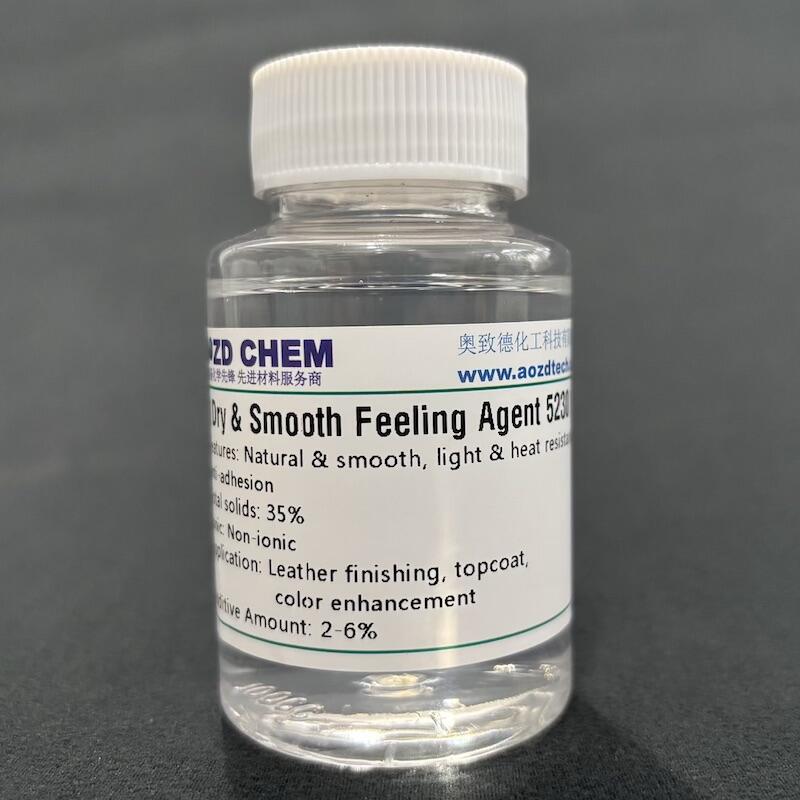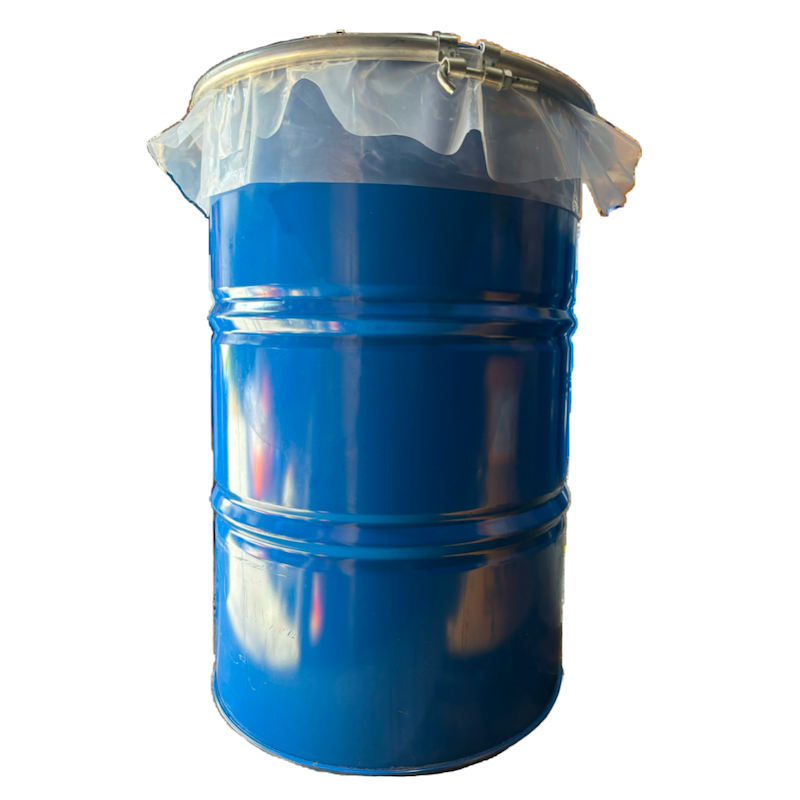Quomodo eligere chemicos pro specificis effectibus finiendi
Finis pellis est ultimus gradus in processu pellis, ubi chemica adhibentur ad speciem, texturam, durabilitatem et functionem augendam. Eligere rectos chimica corii necessarium est ad specificos effectus finiendi consequendos, sive luciditatem, mollem texturam opacitatem, resistentiam ad aquam vel antiquam patinam desideras. Cum ampla varietate chimica corii disponibilis—ab coloribus et pigmentis ad finitiones et additamenta—recta eligere requiret intellegere genus pellis, effectum desideratum et modum applicationis. Haec directio explicat quomodo chemica pellis ad specificos effectus finiendi adaptes, ita ut producta pellis praescripta qualitatis et speciei rationes adimpleant dum characteristica naturalia materiae serventur quotiens opus est.
Intellegere genera pellis et earum finiendi necessitates
Diversae genera pellis structuras proprias habent, quae respondent ad chemica. Priusquam chemica pellis eligas, considera pellis qualitates ut conservare naturales proprietates quae unumquemque typum distinguunt:
- Pellis Integra : Crassus, durabilis, et retinet naturalem granum. Habet chemica quae granum augent absque eo velando, ut finitiones transparentes aut coloris mitis. Est ut texturam naturalem et patinae potentiam illustrare.
- Pellis Summa : Levis quam plena granum (cum strato summo levigato). Bene pigmenta et finitiones recipit, idoneam pro coloribus uniformibus aut effectibus nitidis reddens, sed cavendum est ut naturalem mollem servetur.
- Suede/Nubuck : Superficies mollis, villosa (suede e parte interna pellis, nubuck e parte superiore villosa). Chemica habent quae villum (texturam villosam) protegunt absque rigore eius, ut repellentia aquae aut lenis conditores, ut tactum naturalem servent.
- Pellis Emendata : Valde elaboratum cum superficie cooperta ad vitia celanda. Adhaesivos validos et finitiones flexibiles requirit ne rimetur, dum tamen nititur retinere aliquam naturalem texturam.
- Pellis ligata : Factum e fibris recollis vituli. Adhibenda sunt chemicis quae vinculum roborant et durabilitatem augent, ut resinae aut plasticatores, dum nititur imitari speciem naturalis vituli.
Chemica vituli convenientia ad speciem vituli certum adhaerescant, effectum desideratum afferant, et naturales qualitates retineant quae vitulum definiunt.
Principia Chemica Vituli et Eorum Effectus in Finitione
Chemica vituli secundum functionem categorizantur, singula ad creandos certos effectus comparata. Hoc est quomodo eligenes ea pro usu finiendi consilii, dum consideras quomodo naturales qualitates vituli conserventur:
1. Coloris et Umbris Effectus Obtinentes
Color est unum e plurimis effectibus finitionis momenti, et chemicis sicut coloribus et pigmentis utitur ad efficiendos nitidos, uniformes aut consuetos tonsos. Eorum qui visibilitatem granuli naturalis conservare cupiunt, electio inter coloribus et pigmentis magna est:
-
DYES : Intrant pelvim ad colorandam eam de intus, granuli naturali servato.
- Coloribus Acidis : Optimi pro pelle tannata chromo (genera mollia et flectentia in calciis aut saccis usitata). Illi tonsos splendidos et solubiles in aqua proferunt et bene operantur in pelle integra et suprema, granulo perspicuo relicto.
- Coloribus Vegetabilibus : Ex plantis extracti, idonei pro pelle tannata vegetabili (in baltheis, marsupiis usitata). Illi tonsos terrestres creant et per tempus patinam divitem efficiunt, potius quam ut naturalia caracteristica celent.
- Coloribus Alkalibus : Pro pellibus syntheticis (PU/PVC) ad tonsos audaces et vividos efficiendos usitantur, speciebus consistentibus relicta.
-
Pigmenta : Sedete super superficiem ex pelle, obtenturam praebens colorem et vitia celans. Minus idoneae sunt ad servandam naturalem granulationem, sed bene fungebantur cum aequalitas praecipua est.
- Pigmenta Pasta : Miscebantur cum collantibus ad creandam uniformitatem colorum in pelle grana emendata vel pelle prima indigente tegmine. Optima sunt pro coloribus solidis et constantibus (exempli gratia, pelle nigra ad mobilia).
- Pigmenta Metallicum : Addunt scintillam aut nitorem metallicum, populare ad usum in ornamentis vestiariis. Misce cum finitionibus claris ad levem nitorem qui non superet texturam pellis.
Monita : Ad coloris naturalis aspectum in pelle plena granulatione, utere coloribus ad granulationem servandam. Ad coloris aequales et opacos in pelle grana emendata, utere pigmentis. Experire coloris in fragmento prius ad certificandum ut conveniant cum colore desiderato.
2. Creando Effectus Texturae et Tactus
Textura et tactus—a tenero et mollitiis ad firmum et structuratum—nisi sunt clavis ad pellem decipiendam. Chemicata tamen, ut mollificatores, cerae, et repletores, formant has qualitates dum conservant aut augent tactum naturalem pellicum:
-
Mollificatores/Plasticatores : Mollificant et politur pellis.
- Olii Naturales (Lanolinum, Oleum Neatsfoot) : Ideales pro pelle integra, addentes mollescentiam dum conservant spirationem et texturam naturalem. Optimi pro iubis vel globo pelleis indigentibus tactu mollis, quasi cutis.
- Esteres Synthetici : In pelle top-grain uti pro mollescentia diuturna absque pinguedine, perfecta pro mobilibus vel sedilibus automobilis ubi retinere tactum politum sed naturalem interest.
-
Cerae (Cera Apis, Cera Carnauba) : Addunt finitionem opacam, paulo texturam, et tactum mollem cerosum.
- Applica ad pellim integram pro aspectu antiquo rustico vel ad suedem pro textura mollis aqua-resistente quae conservat pilositas naturalem nap.
-
Complectores : Emendate inperfectiones et addite corpus ad corium tenue.
- Emollientia Acrylica : In coriis grana emendata adhibentur ad superficiem uniformem creandam antequam finitio applicatur. Addunt firmitatem tamen aliquam flexibilitatem retinentes, ita ut corium idoneum sit ad saccos vel calceos structos sine sensu nimis artificioso.
Monita : Ad tactum butyrum mollem qui naturales proprietates servat, in coriis grana plena utere oleis naturalibus. Ad texturam firmam et planam cum subtilibus elementis naturalibus, acrylica emollientia cum plasticatoribus syntheticis in coriis grana superioribus iunge.

3. Addere Nitorem et Efulgentiam
Nitorem a nitido splendido ad subtilem luciditatem varii, finitiis et conligamentis assecuti qui vel aspectum naturalem augere vel componere possunt:
-
Finitio Clara : Creant nitorem sine colore immutato, ideonea sunt ergo ad servandam naturalem corii faciem.
- Finitio Acrylica : Aquae disponens, mediaque nitore et flexibilitate gaudeans. Optima pro corio superioris generis (calciis, saccis) quia scrobinationes vitat dum nitorem naturalem retinet.
- Finitiones Poliurethanicae (PU) : Nitorem praecipuum et durabilitatem praebent, optime idoneae ad supellectilem vel opus coriarii luxuosae ad videndum politum. Varietates opacas vel sublustres eligere ad aestheticae naturaliorem servandae.
- Finitiones Cerae : Minorem nitorem et hybridum opacum-nitidum praebent, in opere coriario antiquarii generis ubi forma naturalis et vetusta conservari cupitur.
- Tunicae Vitreatae : Stratulum nitiditatis addunt, saepe in corio correcto ad nitorem augendum utuntur. Pigmentis superimpositae nitiditatem uniformem praebent sed ita temperari possunt ut vitentur aspectus plasticus.
Monita : Ad supellectilem vel rem luxuosam ad videndum politum, finitiones PU eligere. Ad nitorem naturalem quem corium retinet, tenuem stratulam ceram purgatae corii superioris imponere.
4. Durabilitatem et Protectionem Augendam
Cutis aqua, maculis et frictione indiget protectione, praesertim in rebus cotidie usitatis. Chemicata pro cute, ut repellentia aquae, obsignatores et antimicrobica, haec praestant beneficia sine qualitate naturali compromittenda:
-
Repellentia Aquae : Munus contra humiditatem creant.
- Repellentia Silicis : Pro cutis integra (calciamentis et sagulis externis) idonea sunt, quod aquam repellunt tamen permeabilitatem non impediunt, cutis naturalem facultatem «respirandi» servant.
- Fluoropolymers : Diuturnam aquae et macularum resistentiam praebent, pro corio vel nubucko optimum sunt, quod texturam mollem servat dum liquoribus resistentiam praebent.
-
Obsignatores : Infigunt finitiones et contra frictionem tegunt.
- Obsignatores Reticulationis : Fortifica nexum inter corium et finitiones, praeventens exfoliationem in coriis granae correctae dum flexibilitas retinetur.
- Cerae Sigillantes : Addit stratagem protectivum cum finitione opaca, aptum ad antiqua coria ubi conservatio aspectus naturalis usitati pars est decoris.
- Antimicrobica (Zincum Pyrithionis, Argenti Composita) : Praeventent multiplicationem moldarum et bacteriorum, necessaria pro coriis in locis humidis (calceamentis, mobilibus). Invisibiliter operantur, aspectum corii conservantes dum functionem addunt.
Monita : Pro coriis quotidianis, jungantur repellentia aquae cum sigillantibus pro duplici protectione quae texturam naturalem non offusat. Pro coriis subtus, utantur repellentibus fluoropolimeris ad evitandum sternutationem pilorum, tactum mollem et vellutatum conservantes.
5. Effectuum Specialium Consecutio (Antiquarii, Patinae, sive Impressi)
Effectus speciales singularitatem addunt productis coriariis, per usum specialium chemicorum et technicarum quae proprietates naturales augere possunt:
-
Effectus Veteris/Antiquarii : Creatus cum coloribus, cerae, et agentibus attritionis ad imitandum naturale aetatis processum.
- Coloribus Anilini : Inaequaliter applicatus ad pellis integrae granulationis pro aspectu attriti et antiquati qui imitaturs naturalem patinam. Sequere cum cera ad intensiorem texturam antiquam.
- Coloribus Marginum : Pellis marginibus obscurare ad imitandum naturale aetatis, commune in baltheis aut saccis ad manu facti sensum.
-
Patinae Augmentatio : Adiuvare naturalem patinam (nitidum antiquatumque aspectum) cum conditoribus qui pellim nutriant.
- Oleis Naturalibus (Sebum, Oleum Simmondsiae) : Pelli tannato herbaceo cibum dare, adiuvans eam patinam copiosam tempore usuque evolvere—augendo, non celando—naturalem evolutionem.
-
Efectibus Embossing : Creare figuras aut texturas per calorem et pressionem, iunctis adiumentis ad imprimendum quae integritatem cutis servent.
- Lubricantes ad imprimendum : Ut cutis figuram impressam retineat sine rumpendo. In utraque parte cutis vel corrigenda parte cutis utere ad structuras formasque naturalem tactum servantem.
Monita : Ut effectus antiqui naturales videantur, utere anilinis coloribus et cerae in cute tannata. Ut patina citius evolvatur, applica oleos naturales et expose cutim ad lucem et usum frequentem, ut proprietates naturales eius eluceant.
Causae Considerandae Quando Chemicos pro Cute eligis
Modus Applicandi
Chemicis pro cute utendum est per aspergendum, linendum, aut mergendum. Elige chemicos aptos ad modum tuum ut tectio aequalis fiant et effectus desiderati serventur:
- Aspergendum: Utere finitionibus aut coloribus aqua solubilibus ad tegendum aequaliter in superficiebus magnis.
- Linendum: Optimum pro cerae aut repletionibus crassioribus quae applicationem praecisam in minutis partibus requirunt.
- Immergio: Operat pro penetratione profundae colorum in parvis cuo pellibus, satis uniformis coloris sine textura naturali amittenda.
Normae Environmentales et Securitatis
Elige sico chemica pro pelle curata (e.g., finitiones aquae, colora vegetabilia) ut sustentabilitatis metas consequaris. Haec chemica minus probabiles sunt ut pellis naturalem structuram laedant et tutiora sunt pro operariis et consumeribus. Vitare asperos solventes in pelle pro rebus in directo contactu cum cute, quod siccare possunt materiem et mollem naturalem minuere.
Compatibilitas cum aliis Chemicalis
Quaedam chemica male reagunt inter se, quod finitiones perdere vel pellis naturales qualitates laedere potest. Exempli gratia, repellentia silicis possunt coloribus aequabiliter adhaerere. Examine combinationes chimicas in pelle refecta ante plenam applicationem ut certum sit eas simul sine noxi operari.
Pretium et Disponibilitas
Chemicae praestantiae altioris (finis poliurethani, fluoropolymers) cariores sunt sed meliorem durabilitatem offerunt et melius conservare possunt qualitatem pellis. Tempera pretium cum valore producti — pellis luxuosa iustificat chemica praemia quae proprietates naturales augent, dum vilia utensilia poterunt uti alternativis aeque basicis protectionis et speciei.
FAQ
Possum ego miscere diversa chemica pellis ad efficienda plura effecta?
Ita, sed primum testa compatibilitatem. Exempli gratia, misce repellentem aquae cum fine claro ad nitorem et protectionem. Vitare miscentionem productorum silicis et acrylica, quod possunt separari et speciem pellis corrumpere.
Quomodo eligo inter chemica aquae- et solventi-based pellis?
Chemicae aquae-based sunt amicae ad environmentum, levis odorifer, et meliores ad conservandam naturalem pellis respirabilitatem. Chemicae solventi-based fortissimam adhaesionem offerunt sed pellim potest rigida reddere aut texturam naturalem velare — sparsum eas utere, praecipue pro finibus fortibus in pelle grana correcta.
Chemicae pelvi mutabunt an naturalem pelvis spirationem?
Quaedam possunt. Crassae tecturae (ut crassae pelvis tecturae) spirationem minuere possunt, cum tamen leves olei vel tincturae aquosae eam conservent. Electos spirabiles pro calciamentis vel vestimentis ubi commoditas et naturalis functio praecipua sunt eligite.
Quot annorum sunt chemicae pelvis in opere perfecto?
Durabilitas ex chemico et usu pendet: repellentes aquae fortasse 3–6 mensium cum usu regulari durant, dum tecturae annos complures durare possunt. Rursus conditioners vel repellentes periodice adhibe ut effectus mancant et qualitates naturales pelvis conserventur.
Eadem chemica pro pelvi naturali et synthetica uti possum?
Non. Pelvis synthetica (PU/PVC) chemica desiderat quae pro polymeris sunt (exempli gratia, plasticatores, colorantes speciales), dum pelvi naturali chemica fibris amica (olei, colorantes vegetabiles) opus est ad structuram et tactum suum unicum conservandum.
Index Rerum
- Quomodo eligere chemicos pro specificis effectibus finiendi
- Intellegere genera pellis et earum finiendi necessitates
- Principia Chemica Vituli et Eorum Effectus in Finitione
- Causae Considerandae Quando Chemicos pro Cute eligis
-
FAQ
- Possum ego miscere diversa chemica pellis ad efficienda plura effecta?
- Quomodo eligo inter chemica aquae- et solventi-based pellis?
- Chemicae pelvi mutabunt an naturalem pelvis spirationem?
- Quot annorum sunt chemicae pelvis in opere perfecto?
- Eadem chemica pro pelvi naturali et synthetica uti possum?

